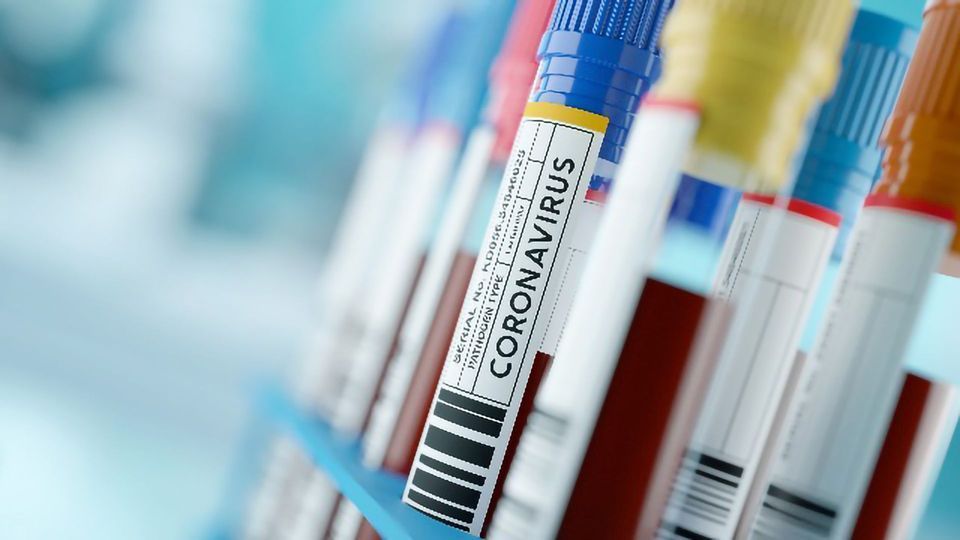More Sensitive COVID-19 Testing Using Droplet Digital PCR

Complete the form below to unlock access to ALL audio articles.
Rapidly identifying individuals infected with SARS-CoV-2 aides the implementation of measures to attempt to control the spread of the COVID-19 pandemic, such as quarantine and contact tracing. However, test results are not always correct: sometimes patients can be infected yet test negative.
We recently spoke with experts at Bio-Rad to learn more about the reasons for, and significance of, false negative test results, and how the use of a more sensitive test could help to reduce this problem.
Q: What can cause someone to test negative for COVID-19 despite being infected with the virus?
A: Most tests for COVID-19 use nasopharyngeal swabs; these are inherently complex sample matrices with a low amount of virus present in early infection. Droplet digital PCR (ddPCR) excels in quantifying nucleic acids from complex backgrounds. Because ddPCR uses an endpoint PCR measurement, it is far more resistant to inhibitors than qPCR. Also, ddPCR doesn’t require a standard curve, but rather provides an absolute count of DNA or RNA molecules. Standard curves are a major source of error in labs attempting to quantify nucleic acid samples, which means qPCR results can vary from day to day, operator to operator, lab to lab. ddPCR gives a physician more confidence in their findings, specifically fewer false negative results.
Q: What is the significance of false negatives in a pandemic situation such as COVID-19?
A: The current estimates of false negative results from qPCR are estimated to be 20–30%. In a pandemic environment where infectivity rates are extremely high, this large percentage of false negative people can unknowingly infect a large population as they believe they are safe and may not be taking the same precautions of known positive patients.
Q: Can you give us an overview of ddPCR?
A: As with a typical PCR reaction, a ddPCR reaction amplifies a target sequence of interest; however, in ddPCR, a sample of purified DNA or RNA is first subdivided into 20,000 uniform 1µL droplets, ideally with one nucleic acid strand per droplet, before sequence amplification begins. ddPCR is a binary reaction: once run, droplets containing the target sequence of interest emit a fluorescent signal as the sequence is amplified, while the remaining droplets emit only background fluorescence. At the conclusion, or endpoint, of the reaction, droplets flow one-by-one through a droplet reader, which counts the number of fluorescent droplets and calculates the target nucleic acid concentration in the original sample.
Because ddPCR results provide absolute quantification of a target sequence of DNA or RNA, the technique does not require a reference curve. Furthermore, because ddPCR uses an endpoint measurement, ddPCR is far less sensitive to PCR inhibitors than other methods such as qPCR.
Q: Bio-Rad’s ddPCR-based test is thought to be hundreds of times more sensitive than traditional qPCR tests. How is this large improvement achieved?
A: Higher sensitivity is achieved by the innate nature of droplets in a test tube: detection of very low levels of virus combined with lack of inhibition from sample types give ddPCR a much more sensitive profile.
Q: How does the ddPCR test compare in terms of cost, ease of use, time to obtain results?
A: The complete cost/test and run time of ddPCR are slightly higher than qPCR but ddPCR is easier to understand and use by scientists.
Q: Two studies* recently carried out in China evaluated the use of ddPCR in COVID-19 testing. Can you give us an overview of the studies and their implications?
A: The goal of the first study out of Wuhan, China was to evaluate the capacity of a ddPCR-based test to detect COVID-19 infection in people suspected to have it. To do this, the researchers compared the performance of their own ddPCR technology-based test, which they ran on Bio-Rad’s QX200 system, to three separate commercial RT-qPCR kits. In total, they tested 103 symptomatic individuals suspected to have SARS-CoV-2, (the novel coronavirus that causes COVID-19), 75 close contacts, and 16 recovering patients. The study’s results indicated that the ddPCR technology-based test was about 93% accurate in detecting SARS-CoV-2 and could detect as few as two copies of viral DNA per reaction.
Furthermore, in individuals that already had COVID-19-like symptoms, the ddPCR technology-based test improved the accuracy of detection from 28% to 87%. The ddPCR test also reduced the incidence of false positive results among close contacts from 21% down to 1%. Finally, the ddPCR technology-based test showed that elderly people recovering from the virus tended to present with higher viral loads for longer periods of time, indicating that these patients would need to remain under observation and in quarantine to prevent further spread of the virus among the general population.
In the second study, researchers at Wuhan University examined whether ddPCR technology could detect SARS-CoV-2 among throat swabs of 57 patients who tested negative using RT-PCR and later developed symptoms of COVID-19. Throat swabs are a common sample type, but they are notorious for containing low viral loads that lead to high rates of false negative test results, which interferes with proper quarantine practices and delays treatment. In the study, however, the researchers found that the ddPCR technology-based test was about 94% accurate in detecting the virus and that it was 500 times more sensitive than RT-PCR.
This study included 14 convalescent patients that had received two negative RT-qPCR results. However, re-testing their samples with ddPCR technology revealed that nine of these patients were actually still hosting detectable levels of the SARS-CoV-2 virus and should have remained in quarantine.
*This article is based on research findings that are yet to be peer-reviewed. Results are therefore regarded as preliminary and should be interpreted as such. Find out about the role of the peer review process in research here. For further information, please contact the cited source.


